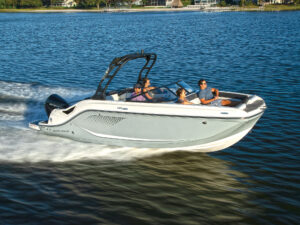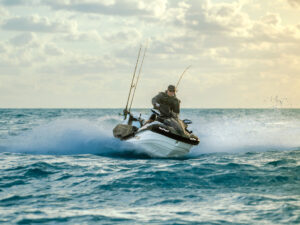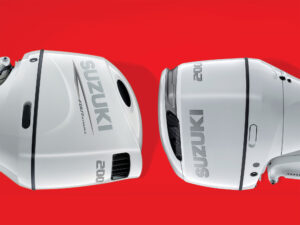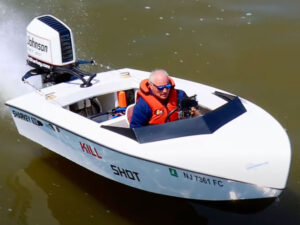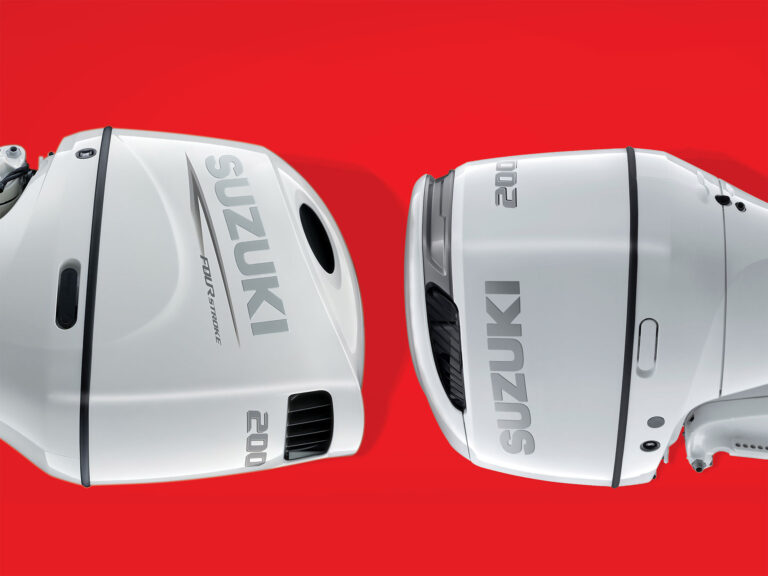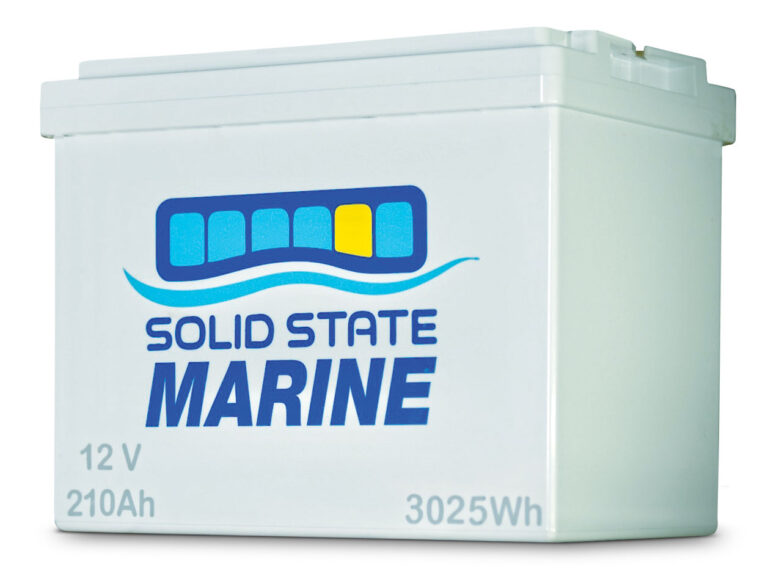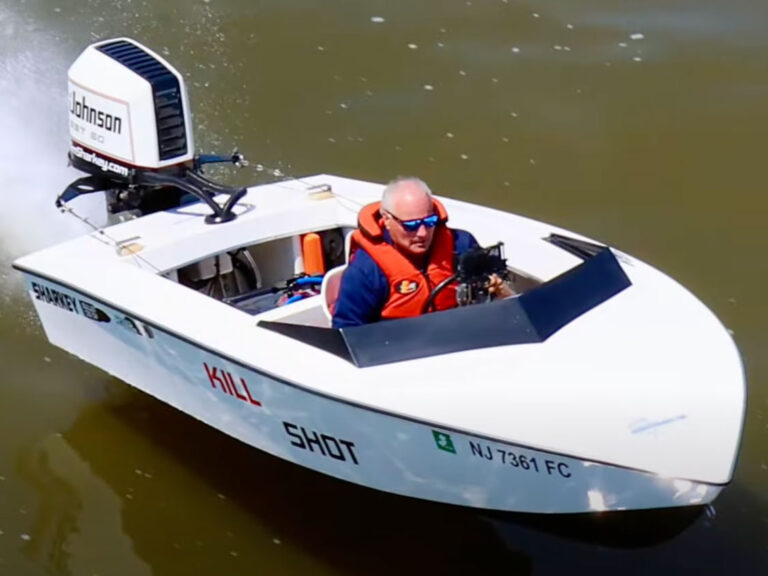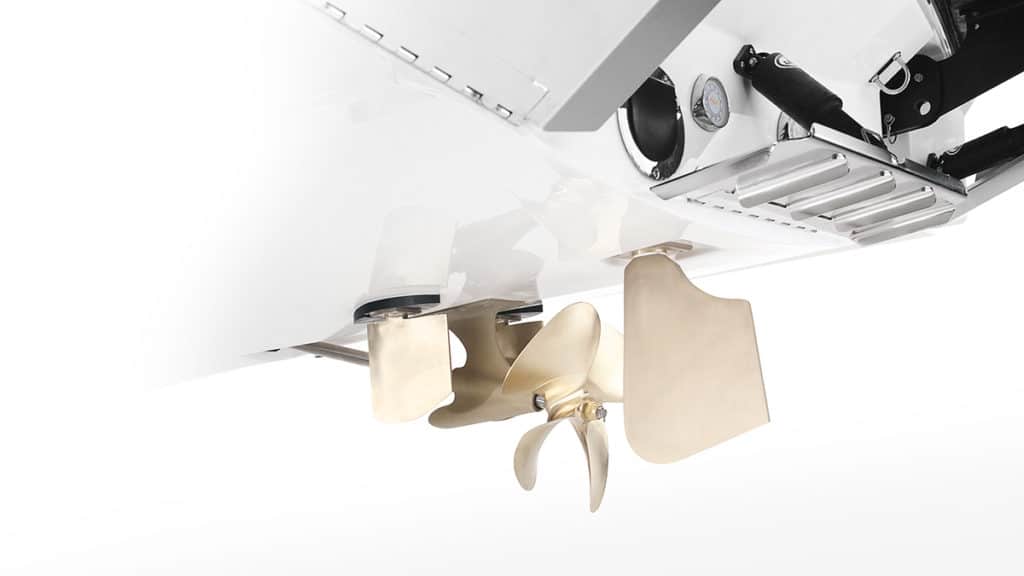
Ski and wake-boat manufacturers have gone to great lengths preaching the merits of inboard power, but for all the positives the fact remains inboards have an Achilles heel — manueverability in reverse. When moving forward, the propeller’s steady flow of water passes over the rudder aft to produce agile, spirited handling. But shift into reverse and that rudder is effectively nullified. There’s nothing forward of the prop to deflect prop wash (and no vectored thrust like you’d find on a sterndrive or outboard; you can’t “steer” an inboard’s prop), so no matter which way the wheel is turned the boat backs effectively in only one direction. A direction determined solely by prop torque, the directional force created by the spinning propeller.
LEARN MORE ABOUT PROPELLER TORQUE
Most inboard consumers learn to adapt, but the quirk keeps countless others, who may benefit from an inboard’s superior wake potential, behind the wheel of a sterndrive. MasterCraft’s enticement to the latter crowd is Dockstar, a steering system enhancement the company claims will make docking and maneuvering an inboard in reverse as easy as parking a car. Or, at least as easy as an outboard or sterndrive.
Dockstar adds a pair of smaller rudders forward of the propeller. These rudders, each approximately half the size of the traditional steering rudder, and linked to operate in unison, flank the driveshaft and fall within the perimeter of the propeller’s slipstream to direct prop wash and better provide the sideways force necessary to turn the boat in either direction. Dockstar requires no modification to existing hull shapes, allowing the company to use a common part. Dockstar will initially be available as an option on seven models between 20′-23′, including an all-new 2017 model yet to be released.
I tested two Dockstar-equipped models at MasterCraft’s Tennessee factory and can vouch for the system’s handling prowess. Most notable is that the system is, ultimately, not all that noticeable. A Dockstar-equipped boat handles much like what we’ve come to expect from an outboard or sterndrive, pivoting in unison with the wheel as the driver spins it to port or starboard. Backing away from a lengthy dock when starboard-side-to can be a daunting task, especially if the wind is pushing the boat up against the dock itself. With Dockstar, I simply spun the wheel to port, gained the necessary clearance and backed away. We also backed the boat into a slip and spun it — to port — roughly within its own length. As the rudders are located forward of the propeller, the hull’s pivot point is moved forward. Is it the handling of a sterndrive? No, it’s hard to beat vectored thrust. But it’s close, and will certainly remove the stigma that has long plagued inboards.
A patent is pending on the system, a patent that MasterCraft claims is broad enough to prevent competitors from easily jumping on the bandwagon. Still, the company prefers to keep their cards close to their chest. While Mastercraft granted us exclusive access to test Dockstar, it did not allow us to view details of the patent, publish actual measurements of the Dockstar rudders and their precise location on the hull bottom, nor reveal a key piece of engineering that’s key to the system’s success.
Bottom line, however, it works surprisingly well. Reverse has been a hurdle for inboard boat manufacturers, and one that has likely kept some boaters from buying in, despite an inboard’s many strengths. With Dockstar, MasterCraft may just have found a way to maneuver around the objections.
DOZENS OF OTHER ARTICLES ABOUT MASTERCRAFT BOATS!

